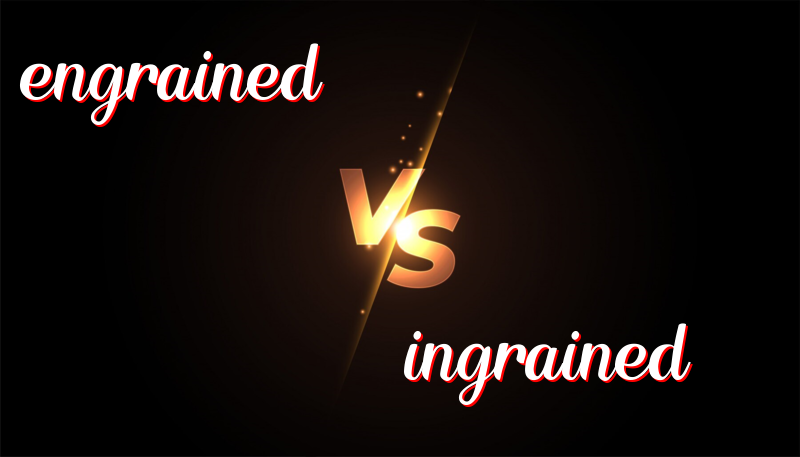Deep Thoughts: Grain or Brain?
Engrained vs. Ingrained
Understanding the words “engrained” and “ingrained” can be a little tricky. They sound almost the same but have slight differences in usage. Let’s explore these words and learn how to use them correctly.
History
Both words have similar meanings and come from the word “grain,” which refers to a small piece of something. In the past, writers used them to talk about ideas or habits that are deeply fixed or set in someone or something. Over time, “ingrained” became more popular, especially in American English.
Usage
Engrained
Even though “engrained” is not as common, it can still be used in similar ways. It often describes things deeply fixed or built into something. Here are some examples:
- The love for nature is engrained in her since childhood.
- His patience is engrained in his personality.
- The traditions are engrained in their culture.
- That belief seemed engrained in the community.
- The memories are engrained in my mind forever.
Ingrained
“Ingrained” is more widely used and commonly accepted. It also describes something deeply fixed, usually a habit or belief. Here are some examples:
- The habit of reading is ingrained in her daily routine.
- His mannerisms are ingrained from a young age.
- The lesson is ingrained in his mind.
- The fear of heights is ingrained in her.
- The idea of kindness is ingrained in the school’s values.
Trick to Remember the Difference
An easy way to remember is to think of “ingrained” as “inside deeply” since it is more commonly used to describe habits and beliefs that are really deep inside a person or community. “Engrained” can occasionally be used in the same way, but it is less common.
Summary
Both “engrained” and “ingrained” can mean the same thing: something deeply fixed or built into something else. However, “ingrained” is more popular and more widely used, especially in American English. You can use either, but “ingrained” is a safer choice if you want people to understand your meaning easily. Remember, “ingrained” is like a grain that is deep inside :), easy to remember if you think about things deeply set inside us!

Leave a Reply
You must be logged in to post a comment.